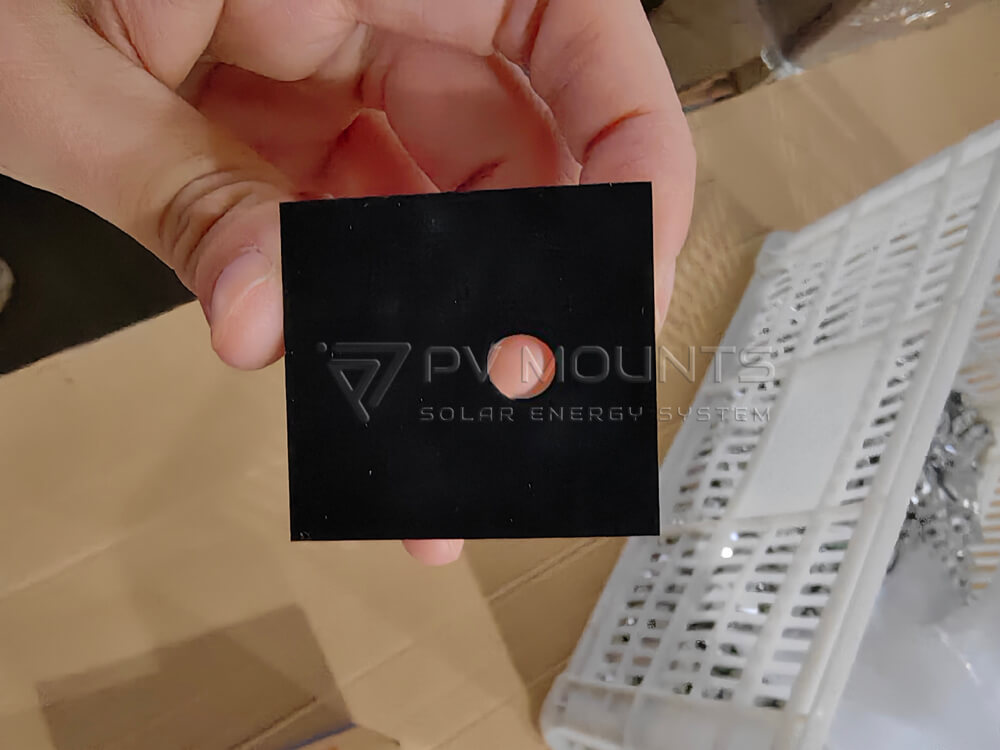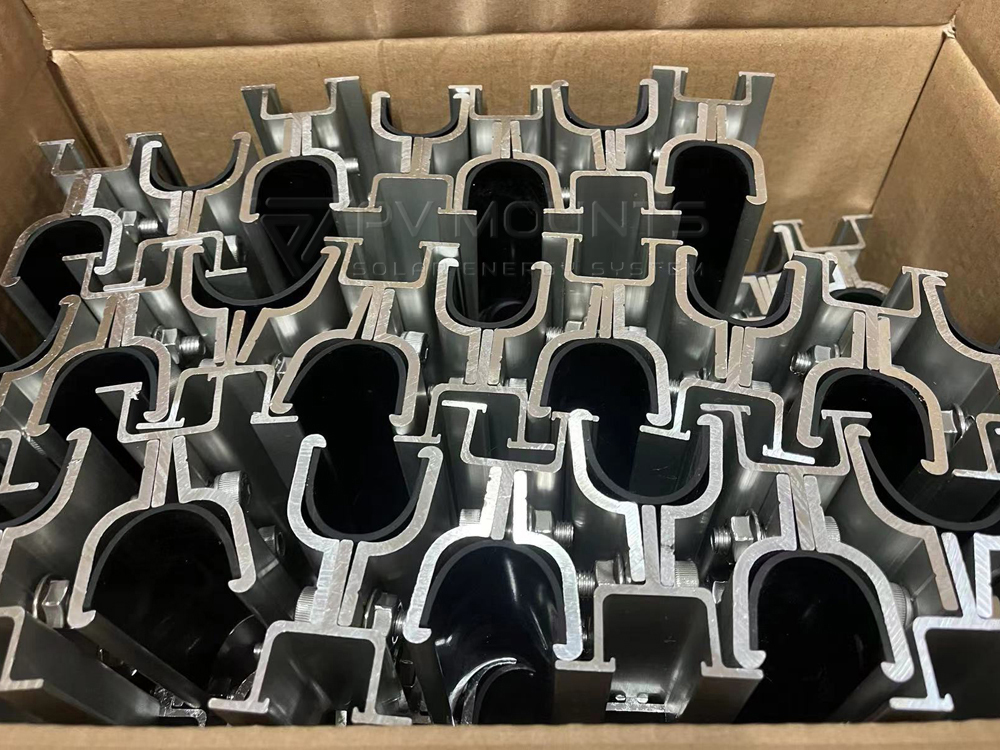As solar power gains prominence in the renewable energy landscape, challenges like securing durable mounting systems arise. Poorly designed mounts can undermine panel efficiency and longevity. EPDM, a synthetic rubber, is emerging as a game-changing solution to these challenges.
What is EPDM?
Ethylene Propylene Diene Monomer, or EPDM for short, is a synthetic rubber characterized by its durability and resistance to extreme weather conditions. EPDM is manufactured from ethylene, propylene, and a small amount of diene monomer; EPDM is used in many applications from automotive to construction and now increasingly in solar mounting systems.
EPDM has been a mainstay in various industrial applications since the 1960s, particularly in weatherproofing and sealing. The shift toward using EPDM in solar mounting systems has been a natural progression, leveraging years of performance data in harsh conditions.
Why EPDM in Solar Mounting Systems?
Advantages Of Traditional Materials
Replacing traditional materials like aluminum or stainless steel, EPDM offers several advantages, including cost-effectiveness, easier installation, and enhanced longevity. It is not only resistant to water, heat, and UV radiation but also remarkably versatile, making it an ideal choice for solar mounting systems.
Lifecycle Cost-Benefit Analysis
In the long run, EPDM proves to be an economical choice. Despite the higher initial material costs than traditional materials, the reduced maintenance and longer lifecycle make EPDM a more cost-effective solution for solar mounting systems.
Mechanical Properties of EPDM
Tensile Strength
One of the standout features of EPDM is its excellent tensile strength, which lends the material its durability. The tensile strength ensures that the solar panels stay securely mounted, even under the duress of high winds or heavy snow loads.
Thermal Conductivity
Interestingly, EPDM has low thermal conductivity, which is a blessing in disguise. While you might think good thermal conductivity is necessary for solar applications, the lower thermal conductivity minimizes the risk of heat-related damage to the panels.
How is EPDM used in solar mounting systems?
Method of Integration
EPDM is typically used as gaskets, washers, or spacers in solar mounting systems. These EPDM components serve as a cushion between the metal parts, reducing friction and the potential for corrosion.
EPDM Foam Tape Integrated L-feet Kit

Real-world Applications
EPDM components are becoming increasingly prevalent, from residential installations to utility-scale solar farms. Companies like Tesla are even incorporating EPDM in their innovative solar roof tiles, serving as a testament to its reliability and efficiency.
Resistance Capabilities of EPDM
No matter the climate—be it the freezing tundra or the scorching desert—EPDM retains its structural integrity. This robust weather resistance is a major selling point for its use in solar mounting systems.
EPDM is remarkably resistant to various chemicals, including alkalines and acids, enhancing its durability in varying environmental conditions.
Fire Safety Measures
EPDM has low flammability and high heat resistance, providing extra safety in solar installations. EPDM is less likely to contribute to the spread of flames in the event of a fire.
You add a fire-retardant layer to your solar panel installation by opting for EPDM-based mounting systems. This can be particularly useful for residential settings where safety is a top priority.
Impactul asupra mediului
While EPDM is not biodegradable, its long lifespan minimizes its environmental impact. Efforts are ongoing to make EPDM more eco-friendly, including developing recycling methods.
The production of EPDM has a relatively low carbon footprint, especially when compared to metals like aluminum. The carbon footprint becomes even more favorable when you factor in its long lifespan.
EPDM vs. Other Synthetic Rubbers
While silicone rubber has excellent heat resistance, it falls short in other areas, such as tensile strength and UV resistance, making EPDM a more balanced choice for solar mounting systems.
Polyurethane is another contender but lacks the UV and chemical resistance EPDM offers, making it less ideal for outdoor applications like solar mounting systems.
Installation Procedures: DIY vs. Professional
DIY vs. Professional
Installing an EPDM-based solar mounting system is feasible as a DIY project, but professional installation is recommended to maximize the benefits of this advanced material. Specialized tools and expertise are often required for optimal installation.
Whether it’s DIY or professionally done, following best practices like ensuring proper torque on bolts and regularly inspecting the EPDM components can greatly maximize the system’s lifespan.
Global Market Trends
Companies like Carlisle, Firestone, and Dow are leading the way in EPDM production. These giants are continually innovating to create higher-quality, more sustainable EPDM products.
As the solar industry continues to grow, so will the demand for high-quality, reliable materials like EPDM. Its usage in solar mounting systems is projected to see a substantial uptick in the coming years.
Întrebări frecvente
Q: What are the primary benefits of using EPDM in solar mounting systems?
EPDM offers a range of benefits, including exceptional durability, resistance to environmental factors, and cost-effectiveness in the long run.
Q: How does EPDM compare to traditional materials like aluminum?
While aluminum is strong and lightweight, it is susceptible to corrosion and has a higher carbon footprint. EPDM offers superior resistance to weather and chemicals, making it a more sustainable choice.
Q: Is EPDM fire-resistant?
EPDM has low flammability and high heat resistance, making it a safer choice for solar mounting systems.
Q: Can I install EPDM components myself?
It is possible to do a DIY installation, but professional installation is highly recommended for optimal performance and durability.
Q: What is the lifecycle of EPDM?
EPDM has an exceptional lifespan, often 20 to 30 years, making it a cost-effective material for solar mounting systems.
Q: Are there any environmental concerns related to EPDM?
While EPDM is not biodegradable, its long lifespan and low carbon footprint make it a relatively eco-friendly material.
Implementing EPDM in solar mounting systems represents a promising fusion of innovation and practicality. With its impressive portfolio of mechanical and resistance capabilities, EPDM stands out as a revolutionary material that addresses the unique challenges the solar industry faces. Its role is complementary and transformative, heralding a future with more durable, efficient, and environmentally sustainable solar energy systems.
















